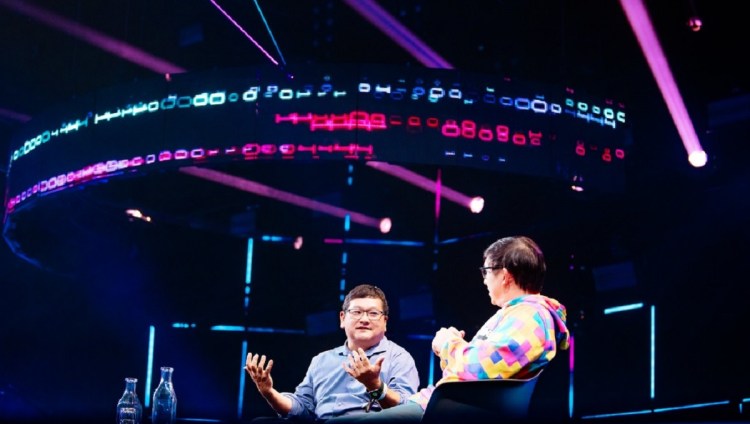Twitch, the Amazon-owned livestreaming service, has made livestreaming and content creators into worldwide phenomena. Fortnite broke out as one of the top battle royale games because so many influential streamers were playing it live on Twitch.
But it was a bit touch and go for Twitch at the beginning — 13 years ago, in 2006 — when it was known as Justin.tv. Justin Kan, Emmet Shear, Kevin Lin, and others were there at the start, when the idea of watching someone stream their daily life seemed ridiculous. But they kept at it, and their business took off with the livestreaming of games. They prioritized gaming and renamed the company Twitch.
And now Twitch has over 15 million unique daily visitors and 3 million content creators, or people who do their own broadcasts. 500,000 of those people stream every day. Twitch’s popularity has risen in tandem with the rise of esports, influencers like Tyler “Ninja” Blevins, and spectator-worthy games such as Fortnite. Twitch’s audience is often bigger than major broadcast TV networks.
As Twitch’s audience grew to tens of millions of users, Amazon bought the company in 2014 for $970 million. Meanwhile, rivals such as YouTube, Microsoft’s Mixer, Facebook Live, and Caffeine are competing with Twitch. I spoke with Kevin Lin, cofounder of Twitch who is still with the company, at the recent Slush event in Helsinki, Finland.
June 5th: The AI Audit in NYC
Join us next week in NYC to engage with top executive leaders, delving into strategies for auditing AI models to ensure fairness, optimal performance, and ethical compliance across diverse organizations. Secure your attendance for this exclusive invite-only event.
Microsoft recently stole away Ninja, the top streamer on Twitch who had more than 50 million followers, to appear exclusively on Microsoft’s competing Mixer livestreaming service. I asked Lin about that.
“Very sad about that,” Lin said, regarding Ninja’s defection. “We’ve known Ninja for 10 years. A lot of people don’t know he has been streaming for that long, before he broke out with Fortnite. He used to be a Halo pro player. Very dedicated Halo streamer. Then when battle royale came out, he rode that wave. It was really cool. What Fortnite did and what Ninja did was really bring games to the next level. That’s something we’ve always thought about. How do we impact the games industry and make it OK to play?”
We also talk about the future of streaming, including the promise of 5G and mobile game streaming.
Here’s an edited transcript of our talk. You can also watch it on video here.
Kevin Lin: I’m co-founder and former COO of Twitch. Twitch is a live streaming interactive video platform for video gamers, traditionally. We’ve now expanded into many other categories, but we were built as a home for gamers. That was the original concept.
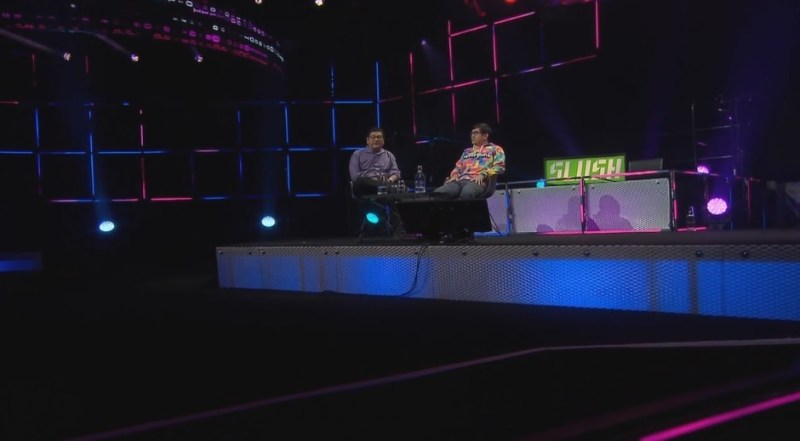
Above: Kevin Lin, right, is cofounder of Twitch, which has 15 million daily visitors for its livestreaming service.
GamesBeat: Tell us how Twitch got started, in the founding stage.
Lin: Twitch used to be a company called Justin.tv, a live video streaming platform for general use. Think YouTube, but live. This was launched in 2007. It started as a one-man reality show based on Justin Kan, one of our other co-founders. He streamed his life 24/7. From there we grew the company, got through the recession somehow, started making money, and as a result — we had not only built this huge distributed live video network around the world, but it gave us the flexibility to start thinking about what we really wanted to do with the platform.
Flash forward to mid-2010. A bunch of us — we’re all gamers. We were huge StarCraft nerds. We somehow got access to the StarCraft II beta, and we were playing it constantly. We were playing in the office. Instead of working we were just playing video games. We realized that the behavior we exhibited ourselves — we were going home after work late at night, around midnight. We played StarCraft that late. We would go home and watch YouTube videos of pro players with commentary from YouTube creators to get better at the game.
We thought to ourselves, “Well, this really could be live. There’s no reason I wouldn’t watch a StarCraft pro live to learn from how they play.” We started reaching out to creators on other platforms, like YouTube creators, that weren’t doing live video. That was a big change for us, actually spending the time to talk with our core customers, the creators, get to know them, and learn from them what tools they needed to have that we needed to build in order to make them successful.
GamesBeat: I remember at the time that a lot of people made fun of Justin. “Isn’t it ridiculous that he thinks his life is interesting enough to live stream?”
Lin: Yeah, there’s a lot of down time in real life, as it turns out. Justin was streaming himself working, walking around San Francisco. He was carrying an 80-pound backpack full of batteries to do that. Flash forward to today, where we’re doing that again. There’s a whole section of the site that used to be called “IRL.” Now it’s called “Just Chatting.” But it’s going back to that original concept of lifecasting.
It all spawned from our own love for video games, talking to creators and learning about what they needed. We eventually launched Twitch in 2011, June 2011, at E3. Some of the feedback we got from the games community was, “We want our own home. We don’t want to be on Justin.tv. We’d rather be in our own place.” We forked the company in two. Some of us carried over to do Twitch, and then Michael Seibel, who’s now CEO of Y Combinator, spun out a company called Socialcam with two of our engineers as co-founders, which got bought by Autodesk in 2012.
GamesBeat: And then Amazon bought you.
Lin: Yep, in 2014 we were purchased by Amazon. What a lot of people don’t know, even to this day — we still are one of the top five websites in most countries around the world in terms of pure bits being pushed, and yet a lot of people don’t know what we do. We serve a very specific audience — a big audience, but a very specific audience.
Anyway, that fundamentally changed our lives. It changed the company. Now we get to do a lot of fun things and expand into other verticals.
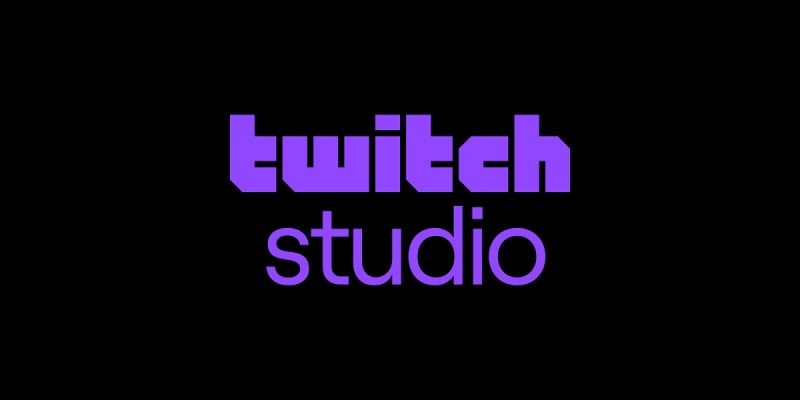
Above: Twitch Studio makes it easier to stream.
GamesBeat: How big is Twitch at this point?
Lin: These days we have more than 15 million people coming to the site on any given day. We have about 1.5 million concurrent users on average, the number of people watching our platform at any given second. People are watching for almost two hours a day. If you think about your average television viewing time, that’s four, four and a half hours depending on country and region. We’re about half of that for a young audience. Our average age is 26.
We have 3 million creators creating content every month, and tens of thousands of partners. Partner streamers are those that are making money on the site. Partners are now making millions of dollars a year. It’s kind of crazy. For those of you who don’t know Twitch very well, people are making millions of dollars streaming video games, something they were already doing anyway, from the safety of their own homes.
GamesBeat: Getting paid to play video games.
Lin: It’s the dream.
GamesBeat: It was not so long ago that people thought it was just a crazy idea to watch someone else play a video game. Spectating a video game was ridiculous, maybe five years ago? Certainly 10 years ago. It’s interesting to see how technology, in this case, has produced cultural change.
Lin: If you think about it – and this is something I wish we were better at pitching when we were raising money in 2012 and 2013 – this is actually a habit that we already partook in as kids. We had a Nintendo, a Sega Genesis. We’d go to the arcade. You’d be with your friends, and you had only two controllers back then, so chances are you weren’t doing homework or anything constructive while your other friends played. You were watching them play while you waited for your turn. Without even realizing in it, we were participating in passive entertainment through video game content.
Because of that, because our whole generation grew up doing that, it just wasn’t something that we thought was — I think Silicon Valley reacted to it exactly like you said. “This is ridiculous.” Video games were already stigmatized as a bad a hobby. You were better off going outside and playing sports or something else. There was a lot of refusal to believe that this was actually a habit of an entire generation. The investors didn’t get it. They didn’t experience that growing up. But we did. I think we just tapped into something that was already a latent habit.
GamesBeat: You take that habit of watching someone else play, and then that turns into the whole esports phenomenon. You guys grew in a vortex with each other — esports on one hand and Twitch viewership on the other.
Lin: Esports was a big part of the genesis of the idea for Twitch. We were watching StarCraft esports and engaging with pro players and commentators as early creators on the site. That was a heavy focus of ours.
Esports has been around for more than 20 years at this point. Twitch has been around for a little over eight years. We really just unlocked — with the proliferation of broadband and mobile internet, we were able to do live video at a non-ridiculous cost. It was affordable. We were able to build those pipes for this unique thing that was starting to happen, which became what you see today in esports.
GamesBeat: And these viewership numbers now are dwarfing a lot of traditional media.
Lin: Oh, yeah. Across Twitch, which is partly esports, and then a lot of individual streamers, that’s 1.5 million concurrents. For most TV networks in the U.S. and elsewhere, that’s pretty high. That puts us in the top five compared to cable TV channels in most countries across the globe.
GamesBeat: So Twitch is bigger than CBS?
Lin: At times, yes. A lot of folks — you think about local news channels, for instance, in small towns, or even in big cities. Average concurrency there might be 50,000 to 100,000. They peak during big shows in the millions, of course. We also peak in the millions. 1.5 million is our average. We’re really right there.
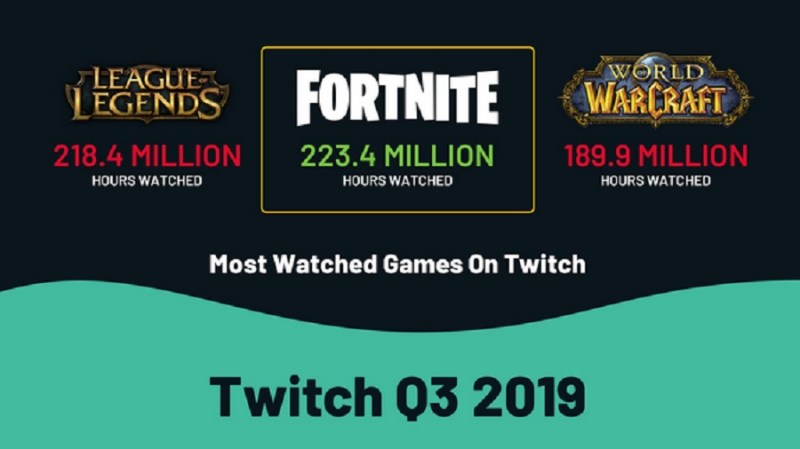
Above: Fortnite is still on top on Twitch game livestreaming.
GamesBeat: The other phenomenon that’s intersecting here is live video. We’ve all seen the rise of that. Our cell phone networks got better and enabled that. Given all the different things that had to come together in order to make this possible, it seems like there was a bit of a perfect storm for you.
Lin: Oh, yeah. Everything from the proliferation of broadband to mobile phones — you look at southeast Asia as an example. A lot of countries there didn’t entirely skip broadband development, but the youth are really attached to their phones. That’s their first device. It’s not a PC. Maybe they went to a PC bang or a LAN café to play PC games, but for the most part now they’re heavily engaged with mobile gaming content. They’re watching everything on their mobile phones.
It really was perfect timing for us when we started this idea. You could pull down a 5-megabit, 7-megabit per second stream, which is required for video games. You don’t want granularity. You want to see the graphics with their highest integrity. You want to see the streamer and interact with them.
GamesBeat: Just last week I saw an astounding stat about southeast Asia and gamers there. About 90 percent of them are playing mobile esports. They’re all competing with each other. The craze for espots in southeast Asia is rivaling StarCraft in Korea now.
Lin: Absolutely. You look at games like PUBG Mobile, Free Fire, Arena of Valor, these are popular games. We don’t see them in the west as much, but they’re very popular in southeast Asia and Latin America, to the point where some of these games have 50 to 60 million daily active players. That’s daily. Their esports are peaking — these games have only really been around for a couple of years, and not only have they reached a large player base, but from an esports perspective, the tournaments they run will see a million concurrents. That’s huge. That’s bigger than a lot of the big esports leagues that you see talked about in the west. Overwatch League and LCS peak much higher, but a lot of CS: GO tournaments are not even as big as that.
GamesBeat: It’s been interesting to watch all the milestones that Twitch has gone through. One of them is that there’s not just one company doing this anymore. There’s a whole competitive matrix out there now. Google responded with YouTube doing a lot of live video. Facebook has Facebook Live. Microsoft has Mixer. There are more startups as well. It’s gotten to be a very interesting competition.
Lin: We’re no strangers to that. It’s a great — I don’t know if it’s validation, because a lot of people are tuning in. Clearly there’s a big demand for this. But everyone has their own thesis. A lot of it is building into cloud gaming. One thing we’ve always wanted to do is make it easy for someone to go from watching someone play a game to playing a game themselves. This is behavior we already see on the platform. What if we made that easier?
Right now, in order to do that, there are all these steps you have to go through as a streamer to allow your fans to play with you. With cloud you can make that easy. You don’t even need to download a game. A brand-new game could come out, a streamer could play it, and they could say, “The next four people that click this button get into jump into a game with me.” With cloud gaming, that’s a thing now. That’s a real thing that can happen. Imagine walking up to the playground basketball court and playing a scrimmage with your favorite player. That would be super cool, right?
That’s something we’ve always wanted to empower, and now people are starting to realize how big the game industry really is. It’s $120 billion a year. It’s bigger than TV, music, or film. It’s bigger than film and music combined as an industry, and it’s growing faster than most other entertainment industries. People are starting to finally realize that, I think. They’ve known, but now they’re really starting to take it seriously. You’re seeing companies like Google and Microsoft really want to get into the space.
It’s not a surprise. It’s a very different type of content compared to what they’re used to. Instead of buying a TV show that’s scripted and produced, you’re going after streamers. You’re looking to develop the relationships with individual streamers.
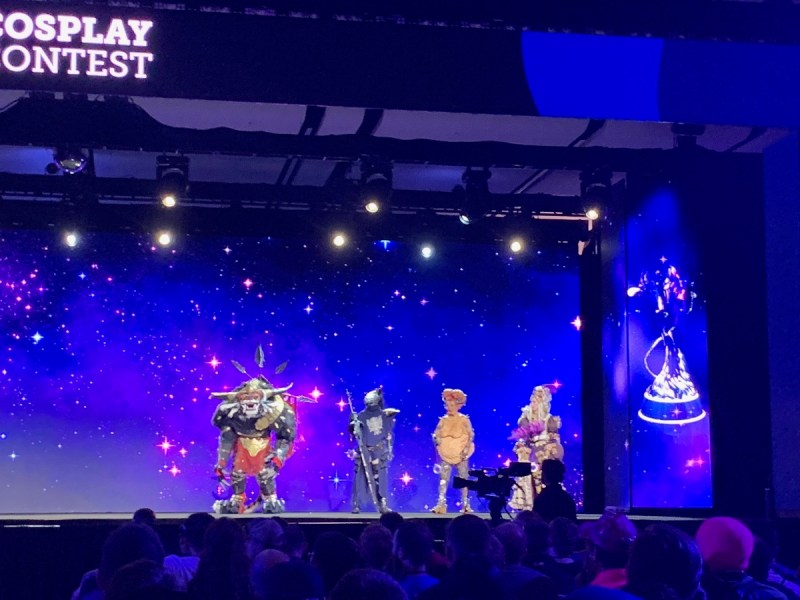
Above: TwitchCon cosplay contest finalists.
GamesBeat: We had this big competitive event where Ninja, who rose to 50 million followers on Twitch, recently defected to Microsoft and Mixer. That had to hurt.
Lin: Very sad about that, very sad. We’ve known Ninja for 10 years. A lot of people don’t know that he’d been streaming for that long before he really broke. He broke with Fortnite. He used to be a Halo pro player, a very dedicated Halo streamer, but when battle royale came out — H1Z1, PUBG, and then Fortnite — he rode that wave. It was really cool.
What Fortnite did, and what Ninja was able to do, was bring games to that next level. That’s something we think about a lot. How do we impact the game industry and make it okay to play? Like I said earlier, it’s a stigmatized hobby, and yet it brings so many people together. It teaches a lot of good social skills. It was important in our lives, and in a lot of our users’ lives. They elevated gaming into the mainstream in a way that a lot of people hadn’t done before. Suddenly it became cool to play games. Rappers, musicians — it’s no longer this hidden-in-the-basement nerdy thing. It’s something people socialize over.
We’ve even seen this just in the diversity on our website, and in the game industry in general, over the last couple of years. We went from what used to be a very male audience, about 90 percent, to now 70 percent men and 30 percent women, which is a huge change in a couple of years. People are more open to talking about video games. They’re more open to playing games as a fun thing to do on a weekend. Gaming is cool now. I think esports has helped with that. Esports players are now a sort of rock stars. That’s pretty cool.
GamesBeat: These content creators themselves are becoming stars. They get to model behavior. They get to deal with toxic behavior in others. They get to teach others how to behave online. That’s been very interesting.
Lin: It’s an interesting point. A lot of folks, if you’re interested in streaming — what a lot of people don’t think to do is they do have to network with each other. There’s a lot of giving back in the community. All these big streamers we have, they drive a lot of the traffic on the site for sure, but what they try to do is play with other streamers. They try to lift up other content creators and help them grow, help them reach a new audience, which is really cool. You don’t necessarily see that in the entertainment industry. That’s something we encourage.
GamesBeat: The top 50, have they reached a point where they’re all these big stars? Do you foresee a lot of competition for those top streamer spots? Is Microsoft going to try to raid some more people that way? Or is that even going to matter? Do these entertainers have such large followings that they can make or break a platform?
Lin: It’s interesting. So far, a lot of the early data shows that it didn’t really have too much of an impact for Mixer, unfortunately. For us, we have up and coming streamers all the time. A lot of people are just part of Twitch as a culture. Twitch as a platform is a culture, a community. A lot of folks have made friends there. They watch multiple streamers. They tend to stick.
But we don’t know where this is going to go. We’ve always had competition in the space. Now it’s obviously getting more aggressive. A lot of people are trying to figure out how to capitalize on the space. To stay ahead we have to innovate. We have to make sure we treat our partners the best way we possibly can. We need to help new, up and coming streamers grow, and help new people become streamers that weren’t before.
We’re trying to build tooling at all levels of that. How do we help streamers network with each other, play with each other? We built something called Squad Streaming, so you can do side by side video players. Instead of just playing with them and pushing people to the other stream, they can pull both streams into their channel and promote them that way. We do hosting. We do co-streaming.
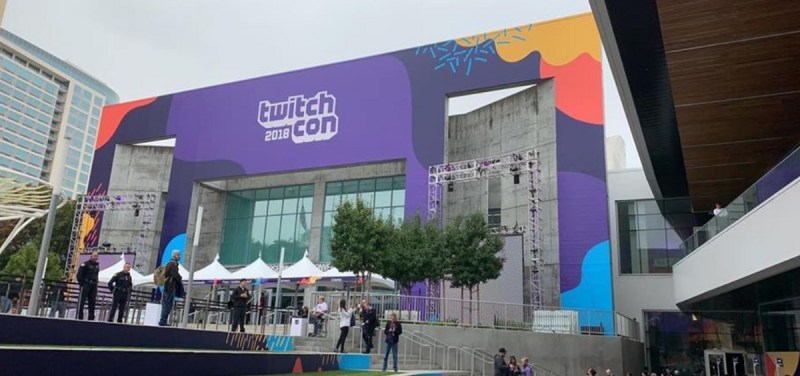
Above: TwitchCon 2018 drew thousands of people to San Jose, California.
GamesBeat: Streaming is evolving from what it was. It’s becoming more of a two-directional thing.
Lin: A little bit, yes. Traditionally it’s been broadcast, one to many. But now you’re starting to see — again, we try to find the behaviors and get the feedback from our creators about habits they’re starting to build to develop their streaming careers and grow their channels. We turn those into products to make their lives easier. That helps a lot in terms of that streamer networking and the cross-growth we see.
GamesBeat: As the steward of the platform, what do you have to think about to not screw this up?
Lin: It’s a tough one. We’ve always had a good line out with our creators. We pride ourselves on the relationships we’re able to build. We take care of them. We spend a lot of them talking to them about their careers – not just on Twitch, but also how to use other platforms, how to think about budgeting for their lives, how to think about what other things they can do. Do they want to do sponsorships, influencer things? Do they want to become esports talent or appear at gaming conventions? We try to help them expand their careers outside of just streaming.
GamesBeat: Esports and Twitch seem to be symbiotic in a lot of ways, but it’s not a huge part of your audience, right?
Lin: We love esports. It’s a big part of the genesis of Twitch. We care a lot about the healthy growth of the industry. But if you look at just esports leagues, it’s only about 10 percent of our traffic. There’s that much more content, all this long tail content. There are about 500,000 people streaming every day, remember. A lot of the long tail content has less than 50 concurrents, these highly engaged small communities that are built around the nodes that are our streamers. Then you see the folks at the top, esports pros or personalities like Dr. Disrespect. You see this huge middle and then the long tail.
It’s really about giving them tools. We’re also starting to expand. A lot of the feedback we got from streamers a couple of years ago led to that category we called IRL, hearkening back to the early Justin.tv days. They weren’t streaming gaming, but they were walking around gaming conventions. They were doing travel shows or other types of content. We’re starting to relax those rules around just streaming games, and we’re seeing people do all kinds of things with the platform.
GamesBeat: As parents, should we let our kids quit school to stream or follow esports?
Lin: Like any other job, it’s a huge commitment. You can’t just be the best player in the world and turn on a stream and it automatically works. You have to engage with the audience and spend a lot of time being — a lot of it is about reliability of content. It’s about scheduling yourself and making sure your audience knows when you’re going live. A lot of these big streamers are streaming every day, many hours a day. It’s hard to draw a line. Because of the way revenue on the site works – it’s advertising and subscriptions – you have to make content to make money.
That’s something we think about a lot as well. How do we help our creators have better balance in life? But it’s not so easy. There’s a lot of people trying, 3 million every month. It’s not as simple as, “Hey, mom, dad, I’m going to become a streamer.” It takes a lot of effort.
GamesBeat: I’m curious about how many streamers out there in the world make a $1 million or more a year. Everyone’s guesses would be interesting there.
Lin: We have several monetization streams – advertising, subscriptions, Bits – so a lot of it is this patronage mechanic. It’s free content, but people still subscribe because they want to support the streamers. They have their entertainers of choice, and they want them to be able to build a career on that. Those are the main monetization methods that happen on our site.
But there are other revenue streams as well. They get direct sponsorships. They do influencer campaigns directly with brands. They work with platforms like Patreon, third-party subscription platforms that sit across content platforms. There are all these other revenue streams that creators have these days. People really are making money with this stuff.

Above: Slush talks on a side stage in a shopping mall.
GamesBeat: There are some interesting questions about what’s still to come. What is your vision there? YouTube had an interesting notion where you could put a link out there, someone could click on it and jump right into a live cloud gaming experience on Stadia. That sounded great, but Stadia is here now, and you can’t do that yet. Still, I wonder, does that give a glimpse of what’s coming in the future, or are there other things you’re looking forward to?
Lin: I think so. That’s something we’ve thought about for a long time. Like I mentioned earlier, it’s behavior that we already see. Streamers play games with their fans, so how do we make that easier? The promise of cloud gaming does make that super easy. That’s one thing.
What happens next after that, though, is that games can be developed with that concept in mind. Not just the individual player or multiplayer, but now you have this audience, this whole group of people that you weren’t necessarily thinking about before as you developed a game. I think you’re going to see a lot of innovation there. There’s been a few games that have come out in the past, kind of like the Hunger Games, where the audience could vote with dollars to impact what’s going on in the game – whether a health pack shows up for your favorite player, or parts of the map suddenly disappear or go up in flames. Extrapolating from that concept, where the audience can have an impact, that’s going to be really interesting. Lots of game companies have been thinking about this problem for years, and you’re going to start seeing some of these games come out soon. That’s going to spur a whole evolution of a new style of game development.
Beyond that, we’re trying a lot of other adjacent categories, like sports. We work with the NBA and the NFL. The way we’re approaching these things is not to just take the same TV feed and put it on Twitch. We want to give our creators the opportunity to create content around this stuff themselves. We take a naked feed from the NBA D-League or NFL Thursday night football, and our partners actually become the commentator, talking over that content for their audience. Not only is it introducing that content to the creator’s audience – and many of them haven’t watched sports in a while – creating that good crossover, but it also gives them something fun to do, something more relaxing. You’re not actively playing a game. It’s a chance to break for a little while and do something new.
So far, so good. These projects have been super fun. We’ve done this with TV shows as well, like Mighty Morphin Power Rangers and Pokemon. The audience seems to really like it.
GamesBeat: 5G is coming. Is that going to give you a chance to crack into mobile?
Lin: Mobile is something we’ve been thinking about for a long time. Within the last couple of years, we’ve picked up games that have long play sessions. We tried to do mobile game streaming way back in the day, but it was too early. Game sessions were just too short, sub-10 minutes. It wasn’t enough time for a live streaming experience. It was fine for on-demand, but it didn’t work for us.
Now people are playing the kind of games I mentioned – Free Fire, PUBG Mobile, Arena of Valor – for hours and hours. That works really well. It’s not easy to stream from mobile, but when 5G comes out, it’ll be very easy to do both, to play a game with high graphics quality on your phone and stream to a platform like Twitch. We just need to make it easy. Right now you have to plug your phone into your PC and still run all your PC software to stream. We need to make that easier.
GamesBeat: The next milestone is that we’ll all get paid to play games.
Lin: Let’s hope.
GamesBeat: It’s your job to make that happen.
Lin: We’ll keep trying.
Disclosure: The organizers of Slush paid my way to Helsinki. Our coverage remains objective.
